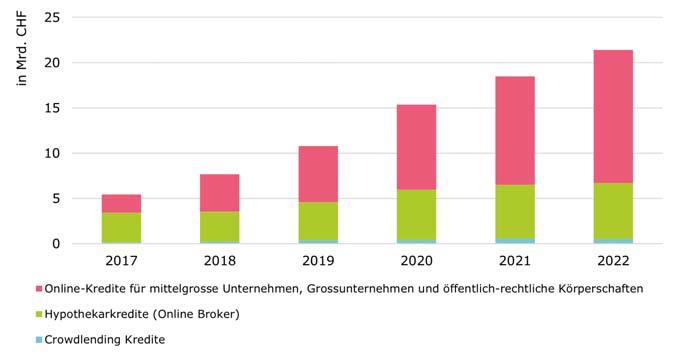Is a radical change in Swiss corporate taxes on the horizon?
As KPMG's "Swiss Tax Report 2019" shows, thanks to the cantons of Vaud and Basel-Stadt, there is movement in the profit tax rates for companies, which have been stagnating for years. The two cantons are likely to be the harbingers of a dynamic that will soon fundamentally change the Swiss corporate tax landscape.

KPMG's "Swiss Tax Report 2019" compares the profit and income tax rates of 130 countries and all 26 cantons. The stagnation in ordinary corporate tax rates that has persisted for years continued last year - with two major exceptions: The cantons of Vaud and Basel-Stadt significantly reduced their profit tax rates: Vaud reduced its profit tax rate from 21.37% to 14.0%, Basel-Stadt from 22.18% to 13.04%.
Since the start of the observation period in 2007, the average ordinary profit tax rate for Swiss companies has fallen by 3.70 percentage points. Various fiscal reform efforts in Switzerland and abroad, such as the AHV tax proposal, will ensure significantly increased momentum in tax competition in the future, according to KPMG's assessment.
Vaud and Basel-Stadt as harbingers of increasing momentum
In the ranking of ordinary profit taxation, the cantons of Central Switzerland and the canton of Appenzell-Ausserrhoden continue to have the lowest tax rates. On average, corporate income taxes in Switzerland were only marginally reduced compared with last year, for example in the cantons of Zug, Schwyz and Glarus. Only the cantons of Vaud and Basel-Stadt have significantly reduced their tax rates this year. These two cantons also serve as harbingers of a dynamic that is likely to significantly change the Swiss corporate tax landscape in the near future.
In the long-term view since 2007, average profit taxation in Switzerland has fallen by 3.70 percentage points. The long-term trend, however, shows stagnating profit tax rates. Only the cantons of Graubünden (-12.94 percentage points), Schaffhausen (-7.02), Lucerne (-6.58) and Neuchâtel (-6.57) have steadily and significantly reduced their rates over the past years. In practice, the 12% mark has effectively established itself as the lower limit - the cantons can hardly afford lower ordinary rates for corporate profit taxes.
Ireland remains Europe's toughest location competitor
In a European comparison, there were hardly any changes in the top group of locations with very low tax rates. The cantons of central Switzerland were also very well positioned in this segment in 2018. Only the Channel Islands (0%) and some (southern) eastern European countries apply even lower ordinary profit tax rates. The largest location competitor in Europe remains Ireland with a profit tax rate of 12.5%.
Bringing up the rear in terms of tax attractiveness are various Northern, Western and Southern European countries - with Norway and Greece (-1 percentage point) as well as Sweden (-0.60) having moderately reduced their rates for 2019. France plans a gradual reduction in ordinary profit taxation to 25.0% by 2022. Compared with 2018, the ordinary profit tax rate was reduced by 2 percentage points to 31.0%.
The world's most attractive locations for tax purposes continue to include various offshore domiciles as well as Qatar, Hong Kong and Singapore. Switzerland continues to rank in the top third in a global fiscal comparison.
Central Switzerland also unrivaled attractive for natural persons
In terms of individual taxation, the cantons of central Switzerland also traditionally occupy the top positions in an intercantonal comparison - together with the canton of Appenzell-Innerrhoden. The cantons of western Switzerland, Ticino and the Mittelland again share the bottom of the rankings for individual taxation.
After a gentle downward trend, the average top income tax rate has settled just below the 34% mark over the past ten-plus years. The cantons of central Switzerland as well as Appenzell-Innerrhoden have topped the rankings since 2007. Overall, the cantons have only made minor tax rate cuts for individuals - with the exception of the canton of Uri, which has reduced its income tax rate from 33.0% in 2007 to 25.35% in the meantime (2019).
There has also been little movement since 2007 in the high-tax cantons, which show little variance in rates. Exceptions are Aargau and the cantons of Solothurn and Jura, which have made significant tax rate reductions over the long term. Individual taxation has remained unchanged for more than ten years in the cantons of Berne, Vaud and Geneva.
Switzerland in the European midfield for individual taxation
In a continental comparison, (southern) eastern European countries continue to have the lowest tax rates for top incomes - partly due to flat-rate tax systems. The majority of Swiss cantons are in the European midfield in terms of top income tax rates. The Western European and Scandinavian countries continue to have particularly high income tax rates.
A global comparison of income tax rates paints a slightly mixed picture: While the well-known offshore domiciles and a few Middle Eastern countries continue to forego income taxes altogether, countries such as South Africa, Australia, China and Japan have very high top tax rates.
In the long term (2007-2019), the Central and Eastern European countries stand out in particular with their tax rate cuts for top incomes: Hungary has reduced its rate by 21 percentage points since 2007, Bulgaria by 14 and the Czech Republic by 10. This contrasts with the Western European countries, some of whose tax rates have risen significantly in the last ten-plus years - most sharply in Iceland from 35.70% (2007) to 46.24% today.
Source: KPMG









